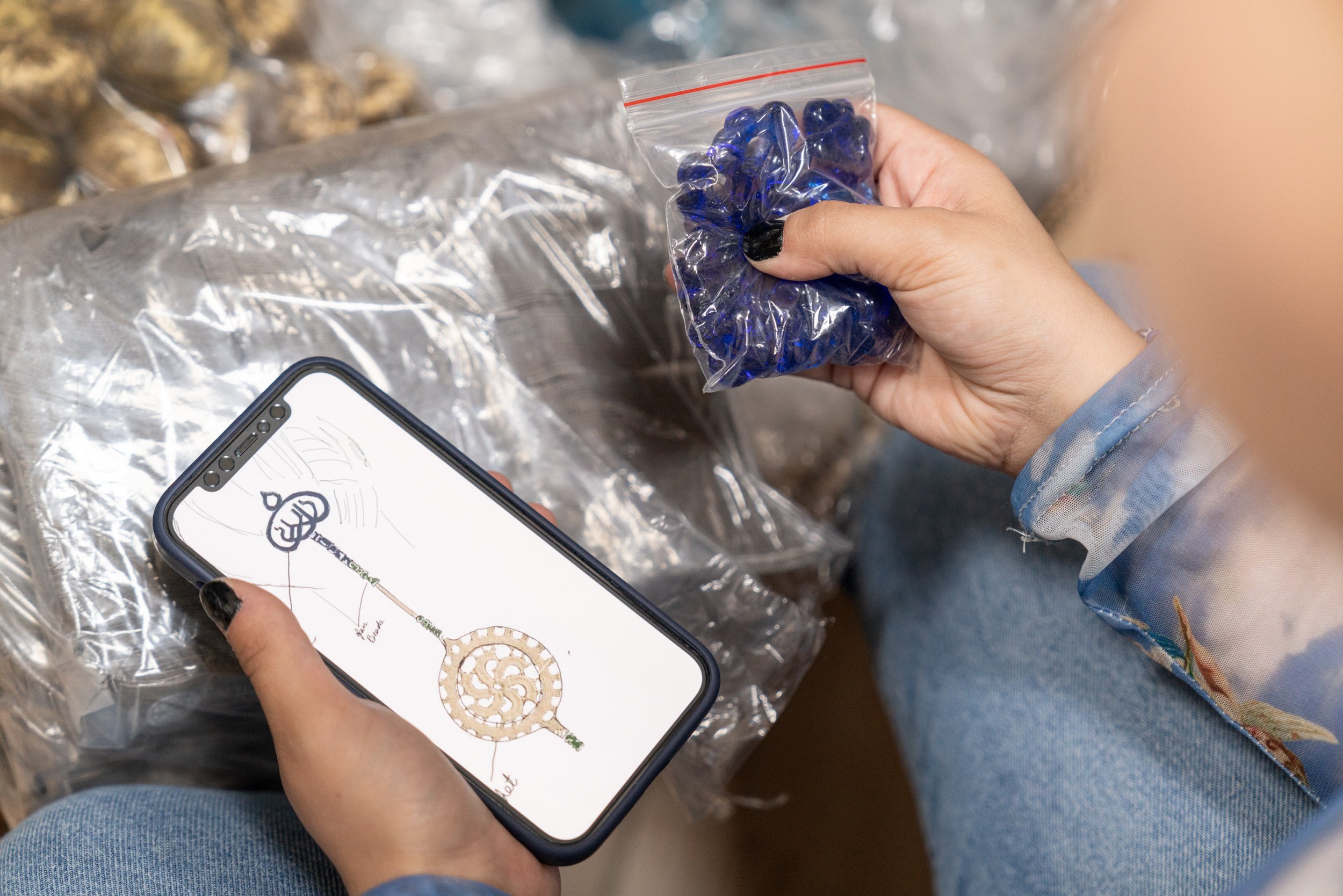Heritage Reimagined - Students Collaborate with L'artisan Du Liban
The collaboration between Creative Space Beirut students and L'artisan Du Liban was an enriching part of their experiential learning curriculum, providing a platform for five of our students to refine their design skills, learn a traditional craft, and work closely with a boutique as a client. As part of the project, students visited L'artisan's boutique, conducted research, and were introduced to a variety of traditional techniques by skilled craftspeople. They were then tasked with designing and creating a product for L'artisan Du Liban, drawing on their own inspirations. Some students chose to work directly with an artisan throughout the process, others opted to develop their designs independently.
Through this experience, the students are also learning to navigate the complexities of aligning their designs with the brand’s guidelines and market expectations. From research and initial sketches to samples and to execution of the item, the continuous feedback from L'artisan ensured that each product aligns with the brand’s ethos, offering students a real-world framework of designing for a particular client.
Joe Al Daccache scaled up traditional weaving techniques into an oversized shawl, incorporating knitting work done in the village of Deir El Ahmar.
Miled Chahla drew inspiration from the traditional Lebanese coffee cup, applying the Tahreer method of embroidery combined with machine embroidery to a puffer bag, blending functionality and contemporary style with a familiar, traditional touch.
Sonia Melkisetian designed a patchwork puffer jacket made with traditional artisanal fabric, and integrating ribbons.
Karim Karam created a traditional abaya with an overskirt that can be worn separately. The design features fringes adorned with brass pieces and uses linen fabric from L’artisan, merging traditional wear with modern versatility.
Patile Tachjian created a mini-collection featuring a hand-bag and a necklace. She created a unique print and used a traditional method of block printing on the bag, adding beading and a fringe. The print was made into a clay mold and cast in bronze and aluminum to create a matching necklace.
The hands-on approach of working simultaneously with artisans and a client enriches our students’ understanding of the creative and commercial aspects of the fashion industry, while highlighting the importance of sustaining traditional crafts. By integrating time-honored techniques into contemporary design, students help keep these valuable skills alive and relevant and deepen their appreciation for the craftsmanship that underpins much of traditional design.


























